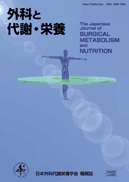Volume 56, Issue 5
Displaying 1-11 of 11 articles from this issue
- |<
- <
- 1
- >
- >|
-
2022 Volume 56 Issue 5 Pages 161-
Published: October 15, 2022
Released on J-STAGE: November 15, 2022
Download PDF (515K)
-
2022 Volume 56 Issue 5 Pages 163-
Published: October 15, 2022
Released on J-STAGE: November 15, 2022
Download PDF (531K)
-
2022 Volume 56 Issue 5 Pages 165-171
Published: October 15, 2022
Released on J-STAGE: November 15, 2022
Download PDF (782K) -
2022 Volume 56 Issue 5 Pages 172-175
Published: October 15, 2022
Released on J-STAGE: November 15, 2022
Download PDF (729K) -
2022 Volume 56 Issue 5 Pages 176-180
Published: October 15, 2022
Released on J-STAGE: November 15, 2022
Download PDF (666K) -
2022 Volume 56 Issue 5 Pages 181-185
Published: October 15, 2022
Released on J-STAGE: November 15, 2022
Download PDF (701K) -
2022 Volume 56 Issue 5 Pages 186-191
Published: October 15, 2022
Released on J-STAGE: November 15, 2022
Download PDF (878K) -
2022 Volume 56 Issue 5 Pages 192-195
Published: October 15, 2022
Released on J-STAGE: November 15, 2022
Download PDF (721K)
-
2022 Volume 56 Issue 5 Pages 196-201
Published: October 15, 2022
Released on J-STAGE: November 15, 2022
Download PDF (705K)
-
2022 Volume 56 Issue 5 Pages 202-207
Published: October 15, 2022
Released on J-STAGE: November 15, 2022
Download PDF (720K)
-
2022 Volume 56 Issue 5 Pages A56_5-
Published: October 15, 2022
Released on J-STAGE: November 15, 2022
Download PDF (664K)
- |<
- <
- 1
- >
- >|
